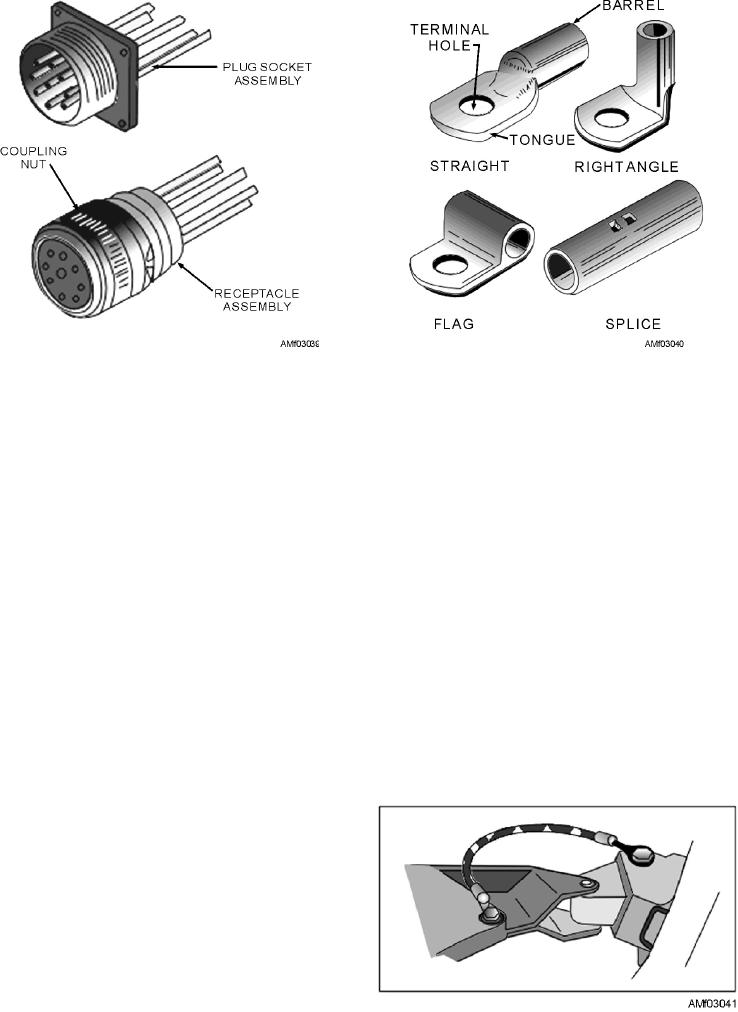
Figure 3-39.--Connector assembly.
Figure 3-40.--Basic types of solderless terminals.
Bonding connections are made of screws, nuts,
TERMINALS
Since most aircraft wires are stranded, it is neces-
shows a typical bonding link installation.
sary to use terminal lugs to hold the strands together.
Bonding also provides the necessary
This allows a means of fastening the wires to terminal
low-resistance return path for single-wire electrical
studs. The terminals used in electrical wiring are either
systems. This low-resistance path provides a means of
of the soldered or crimped type. Terminals used in
bringing the entire aircraft to the earth's potential when
repair work must be of the size and type specified in the
it is grounded.
applicable maintenance instruction manual. The
Whenever you perform an inspection, both bond-
solderless crimped-type terminals are generally rec-
ing connections and safetying devices must be in-
ommended for use on naval aircraft. Soldered-type
spected with great care.
terminals are usually used in emergencies only.
The basic types of solderless terminals are shown
STATIC DISCHARGERS
in figure 3-40. They are the straight, right angle, flag,
and splice types. There are variations of these types.
Static dischargers are commonly known as static
wicks or static discharge wicks. They are used on
BONDING
aircraft to allow the continuous satisfactory operation
of onboard navigation and radio communication
An aircraft can become highly charged with static
systems. During adverse charging conditions, they
electricity while in flight. If the aircraft is improperly
bonded, all metal parts do not have the same amount of
static charge. A difference of potential exists between
the various metal surfaces. If the resistance between
insulated metal surfaces is great enough, charges can
accumulate. The potential difference could become
high enough to cause a spark. This constitutes a fire
hazard and also causes radio interference. If lighting
strikes an aircraft, a good conducting path for heavy
current is necessary to minimize severe arcing and
sparks.
When you connect all the metal parts of an aircraft
to complete an electrical unit, it is called bonding.
Figure 3-41.--Typical bonding link installation.
3-23

